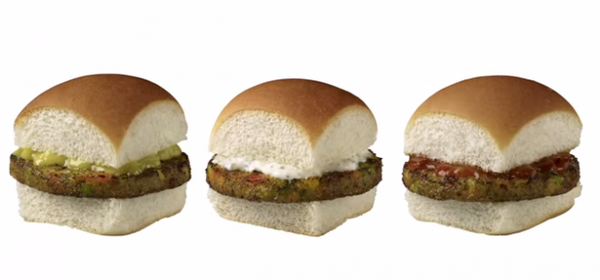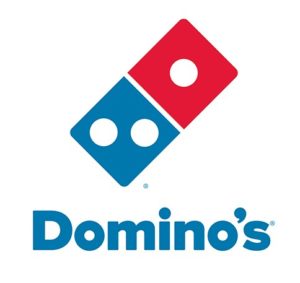Posted on
December 24, 2015 by
The VRG Blog Editor
White Castle, the oldest American hamburger chain begun in 1921 now with nearly 400 locations in twelve states, introduced a Veggie Slider in December 2014. http://www.whitecastle.com/about/company/news/white-castle-unveils-veggie-slider
At that time and as late as early October 2015 when we checked White Castle’s website ingredient list, the bun on which it was served was not vegan. It contained sodium stearoyl lactylate (SSL); diacetyl tartaric acid ester of mono- and diglycerides (DATEM); enzymes and L-cysteine, all of which could be animal-derived. It also contained sugar which could have been processed through cow bone char. Here is the complete ingredient statement of the original White Castle bun:
Bun Ingredients: (bleached enriched wheat flour (malted barley flour, niacin, reduced iron, thiamine mononitrate, riboflavin, folic acid), water, sugar, soybean oil, contains 2% or less of the following: yeast, salt, sodium stearoyl lactylate, diacetyl tartaric acid esters of mono- and diglycerides (DATEM), calcium sulfate, enzymes, ascorbic acid, potassium iodate, L-cysteine, azodicarbonamide (ADA).
White Castle stated that the original bun for their Veggie Slider was not vegan: http://static-whitecastle-com.s3.amazonaws.com/HowVeggieSlidersarePrepared.pdf
In response to vegans’ requests, White Castle changed its bun formulation. White Castle’s website stated it this way:
“We received great feedback from some in the vegetarian community requesting this. Since then we’ve been working on just that—a vegan bun. We made the decision to go ahead with the Veggie Slider with the possibility of a vegan bun and hope to offer one soon!”
Here’s White Castle’s Twitter feed on this topic at the Veggie Slider’s debut showing several vegan bun requests and the restaurant chain’s intention to create a vegan bun: https://twitter.com/WhiteCastle/status/550064410568708097
Here are the first online mentions of the vegan bun’s debut in restaurants. White Castle responded in the second link:
https://twitter.com/veganxpress
https://twitter.com/LazyGirlVegan/statuses/651583250046001152
In December 2015 when The VRG reviewed the White Castle website for this article, the ingredient statement (posted with an effective date of October 2015) for the only bun appearing in the entire ingredient list read as follows:
Traditional Bun:
enriched bleached wheat flour (wheat flour, malted barley flour, niacin, iron, thiamine mononitrate, riboflavin, folic acid), water, high fructose corn syrup, salt, soybean oil, contains 2% or less of each of the following: yeast, calcium stearoyl lactylate (CSL), guar gum, monoglycerides, monocalcium phosphate, sodium alginate, ascorbic acid (vitamin C), enzymes.
We note the absence of L-cysteine and sugar in the new bun in comparison with the original bun. L-cysteine is most often derived from duck feathers although non-animal-derived L-cysteine is commercially available. Sugar may be of concern to vegans who avoid cane sugar that had been whitened using cow bone char. Most cane sugar processed today in the US is processed this way. Sugar beets and USDA Organic cane sugar are not.
Knowing that monoglycerides and enzymes could be animal-derived and calcium stearoyl lactylate could be animal- and/or dairy-derived, The VRG called White Castle specifically about these ingredients.
Monique on the customer service line in December 2015 confirmed that the “Traditional Bun” listed in the ingredient statement is the bun used for the Veggie Slider. She told us that she didn’t have more ingredient source information but would research it and get back to us.
The next day we received an email reply from Jason Suitt Quality Assurance and Research & Development Manager at White Castle. He wrote:
“Thank you for your recent inquiry as to whether the enzymes in our buns used on our Veggie Sliders are derived from animal sources. Back in August of this year, we reformulated our buns to remove all animal byproducts, so that they now may be considered vegan. That said, please keep in mind that the buns and veggie patties are prepared in a common kitchen, so they may occasionally come into contact with non-vegan items. Thank you again for your inquiry, and please let me know if you have any other questions.”
Since Jason didn’t refer to the monoglycerides and calcium stearoyl lactylate in his reply, we left him a phone message about them. He replied promptly by phone stating that: “No animal byproducts including dairy are in the new formula bun…Our bakery division carefully researched all ingredient sources for our bun so it is vegan.”
Readers may also note that the French fries, onion chips, onion rings, and home-style onion rings are all “cooked in the same oil as items that may contain wheat, eggs, milk, soy, fish, shellfish.” According to the White Castle ingredient list the French fries and home-style onion rings appear all-vegetable. The onion rings contain milk and the onion chips contain egg and milk. Not all of these items are available in all locations. See http://static-whitecastle-com.s3.amazonaws.com/WCIngListSept.2015.pdf for more information.
For a White Castle location near you, visit: http://www.whitecastle.com/locations
The contents of this posting, our website, and our other publications, including Vegetarian Journal, are not intended to provide personal medical advice. Medical advice should be obtained from a qualified health professional. We often depend on product and ingredient information from company statements. It is impossible to be 100% sure about a statement, info can change, people have different views, and mistakes can be made. Please use your best judgment about whether a product is suitable for you. To be sure, do further research or confirmation on your own.
To support The Vegetarian Resource Group research, join at http://www.vrg.org/party/index.php
Or donate at www.vrg.org/donate



